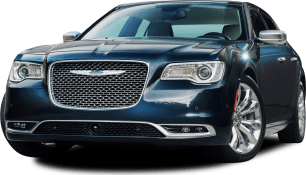Roll onto a smooth, dry surface, engage the SRT’s standard launch control function and you’ve dialled in the ability to storm from 0-100km/h in a ludicrously rapid 4.5sec.
Unlike smaller capacity turbo engines, the big atmo Hemi takes a while to develop maximum torque (637Nm), hitting peak pulling power at 4250rpm. Keep the throttle pinned and full power (350kW) is achieved on the cusp of the rev limiter at 6150rpm.
All this fire and fury is accompanied by a beautifully brutal V8 roar courtesy of an active exhaust which tweaks the pulsing note it produces according to drive mode and throttle position. It’s hard not to love it, complete with rude pops and crackles on the over-run.
Beware though, this car is relatively loud all the time, so you’ve got to hope the love affair is a long-term one.
Suspension is by a short and long arm (SLA) and upper A-arms at the front, with a five-link set-up at the rear, and Bilstein adaptive dampers all around.
The switch between Comfort and Sport is swift and marked, with the latter best kept for billiard tables and race circuits. Around town ride in the more compliant setting is agreeably smooth.
Push the big 300 along your favourite backroad and you know you’re asking two tonnes of metal, rubber and glass to move against its will.
The eight-speed auto responds well in manual mode (with wheel-mounted paddles), and the grippy sports front seats do decent job of keeping their occupants stable and balanced, but the sheer mass of this car means you’re never going to get a corner-carving hot hatch-like experience.
And despite a chunky, leather-trimmed sports wheel, the hydraulically-assisted ‘SRT Tuned’ steering isn’t exactly the last word in road feel or sharp response.
Having said that, the fat 20-inch (245/45) Goodyear Eagle F1 rubber grips hard with minimal impact on ride quality, and in a more relaxed mode the SRT is a stress-free and comfortable tourer.
Big acceleration is balanced by big brakes, with beefy ventilated rotors (360mm fr / 350mm rr) clamped by Brembo four-piston calipers front and rear.
The system’s outright power is impressive but can be abrupt on initial application at around town speeds, until you get used to greasing the pedal pressure in.
‘SRT Performance Pages’ allows you to scroll through multiple real-time data screens (timers, G-force, engine performance, etc), which is fun, with outputs downloadable to a USB stick or SD card. The 19-speaker harman/kardon audio system absolutely cranks, and the active cruise control works intuitively, without the frustrating conservatism (taking forever to pick up the throttle) of some other systems







